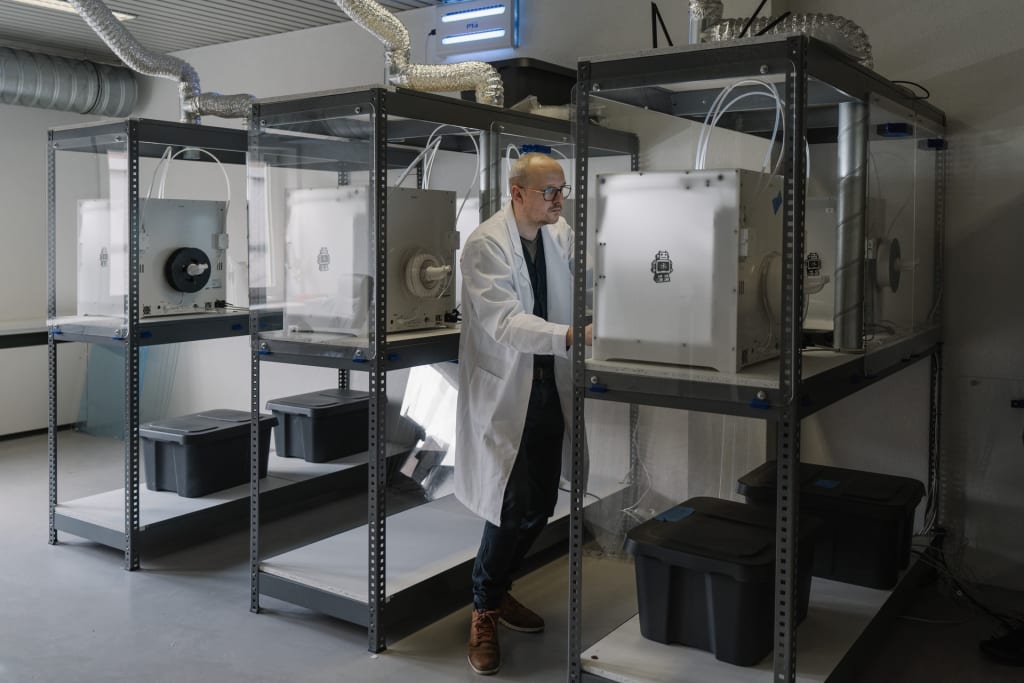How 3D Printing Is Changing The Healthcare Industry
3D printing technologies are revolutionizing the healthcare industry.

3D printing has been making waves in various industries over the past few years. The automotive industry, for example, is utilizing this technology to speed up prototyping and testing of designs, reduce tooling costs, and manufacture spare parts. Architecture firms and interior design agencies are using highly detailed models to help visualize their designs.
And the healthcare industry? Its use of 3D printing technology has opened up new possibilities in the treatment and care of patients. How exactly? Let us count the ways.
Affordable Prosthetics
Mass-produced prosthetics are expensive. Custom-made ones which provide a better fit and feel are even more so. In fact, tens of millions of people around the world are currently living without alike because they cannot afford one. But with 3D printing, the cost of producing custom-fit prosthetics is much lower, enabling more people to be able to avail of them.
That's not the only benefit. Amputees typically need to wait weeks, if not months, to get their prosthetics. 3D printing has made it possible for them to receive it much faster. More importantly, because of the low cost of these products, it has made it easier for parents to bear the cost of prosthetics for their child who quickly outgrow their prosthetic limbs and require new ones made.

Low-cost, faster production or prosthetics is not the only benefit brought about by 3D printing in this area. One company, Body Labs, has taken it a step further by scanning the patient's own limbs and printing them, creating prosthetic limbs that provide a more natural fit AND appearance.
Orthopaedic Implants
3D printing has not only enabled people to get limbs that they've been missing, they can now also replace joints and/or bones that you no longer have such as knee caps or hip joints. Just like with prosthetics, creating custom orthopaedic implants can help ensure comfort and a snug fit for optimal function. Because the implants are specifically designed for the patient, the likelihood of surgical success goes higher. This also improves the speed of post-surgery recovery.
Aside from orthopaedic implants, 3D printing can also be used to create custom-fit hearing implants and even dental restorations such as dentures and crowns.
3D-printed Surgical Tools
One-size-fits-all surgical tools such as forceps, medical clamps, and scalpel handles have come and gone. These days, customized, surgeon-specific tools are slowly becoming the norm due to the application of 3D printing in the medical field. Why is this important? With 3D printing, manufacturers are able to improve on current designs using feedback from surgeons at a lower cost. It allows doctors to customize their tools to better serve the patient and better perform a procedure.

Surgical procedures and techniques will continue to advance, requiring new surgical instruments to be developed. Rapid prototyping reduces the time spent in developing and manufacturing the tools. And since 3D printing on demand is possible, hospitals will not need to buy large quantities of the tools to make sure they are always available. Instead, they can just request custom-fitted tools whenever the need arises. This not only lowers the cost but also reduces waste.
Medical Phantoms
Medical phantoms are objects that serve as stand-ins for human tissues and organs. Their primary purpose is to make sure that imaging systems and methods are accurate and done correctly. However, that's not the only use for these objects. These "models" can also be used to teach doctors about certain diseases and surgical procedures before they are exposed to a live subject. 3D printing not only lowers the cost of producing medical phantoms, but it also helps ensure doctors get the training they need.
This is especially important when there is a scarcity of cadavers and healthy organs at their disposal. This technology also enables doctors to produce 1:1 3D printed models of patient-specific organs. They can help surgeons plan and practice a complex procedure before operating on a patient, increasing their likelihood of success.
Bioprinting
3D printing is not limited to creating tools and equipment for medical professionals. It has made an impact on organ transplants as well. Specifically, bioprinting is the process of combining cells, growth factors, and biomaterials using 3D printing techniques in order to create an organ-like structure. Patients can wait for years before they can receive a transplant.
Bioprinting is not only a cheaper alternative, it will create a supply for which there is high demand. While this technology is still in its trial phase, there have been advancements made over the years. Since the early 2000s, simple organs like bladders have been printed by scientists. In 2013, scientists were able to “bioprint” a functioning piece of liver tissue. And in 2019, scientists in Israel were able to “bioprint” a rabbit-sized heart made of human tissue. It won't be long before 3D printed human organs will become a true reality.
About the Creator
Louisa Allen
Louisa is a content marketing professional and editor creating her successful career past 2 years at D3D Printing. She is a goal-oriented, creative individual with a unique voice in writing.






Comments
There are no comments for this story
Be the first to respond and start the conversation.